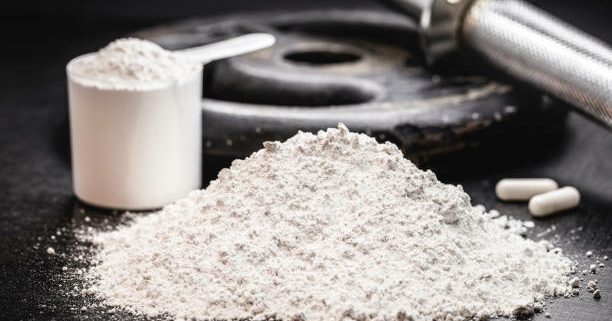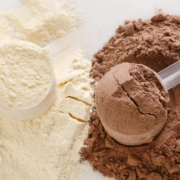All about Creatine
First off, what exactly is creatine?
Creatine is a molecule that is produced in the body from amino acids. It’s primarily made in the liver and (to a lesser extent) in the kidneys and pancreas. Creatine stores high-energy phosphate groups in the form of phosphocreatine. These phosphate groups are donated to ADP to regenerate it to ATP, the primary energy carrier in the body. This role in energy production is particularly relevant under conditions of high energy demand, such as intense physical or mental activity.
Creatine can be found in some animal-based foods and is most prevalent in meat and fish.
Athletes commonly take it as a powder or in capsules.
Creatine is one of the most researched supplements on the market
What are creatine’s main benefits?
The primary benefit of creatine is an improvement in strength and power output during resistance exercise. Creatine is well researched for this purpose, and the effects are quite notable for a supplement. When used in conjunction with resistance exercise, creatine may modestly increase lean mass. It has also been tested for effects on anaerobic running capacity in many studies, the results of which are rather mixed but generally suggest a small improvement in performance.
Although creatine has been researched far less for cognitive performance than physical performance, it may have benefits in some contexts. Creatine appears to reduce mental fatigue in scenarios such as demanding mental activity and sleep deprivation. Creatine may also improve working memory, though likely only for people with below-average creatine levels, such as vegetarians and older adults. More research is needed in these areas and on other cognitive measures before creatine can be said to be effective.
Dosage information
There are many different forms of creatine available on the market, but creatine monohydrate is the cheapest and most effective. Another option is micronized creatine monohydrate, which dissolves in water more easily and can be more practical.
Creatine monohydrate can be supplemented through a loading protocol. To start loading, take 0.3 grams per kilogram of bodyweight per day for 5–7 days, then follow with at least 0.03 g/kg/day either for three weeks (if cycling) or indefinitely (without additional loading phases).
For a 180 lb (82 kg) person, this translates to 25 g/day during the loading phase and 2.5 g/day afterward, although many users take 5 g/day due to the low price of creatine and the possibility of experiencing increased benefits. Higher doses (up to 10 g/day) may be beneficial for people with a high amount of muscle mass and high activity levels or for those who are non-responders to the lower 5 g/day dose.
Stomach cramping can occur when creatine is supplemented without sufficient water. Diarrhea and nausea can occur when too much creatine is supplemented at once, in which case doses should be spread out over the day and taken with meals.
What is the best form of creatine?
Although several forms of creatine have been investigated, there is no indication that there is a best form. With that said, it’s important to highlight that creatine monohydrate has the most evidence behind it to support its efficacy.
Summary
- Great benefits for strength gains
- Newer research show potential neurological benefits
- Overall one of the best researched supplements available
- Would recommend this supplement to men and women
- Potential stomach discomfort if taken with insufficient water
There are so many myths regarding Creatine so I will do a separate post on these!








